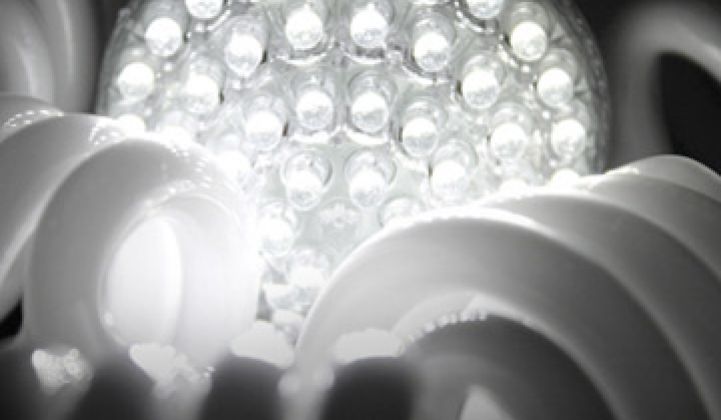Do you want to see a profligate waste of energy?
Look outside tonight.
Approximately 22 percent of the electricity generated in the U.S. gets consumed by lighting and a huge portion of that total is wasted. Those office windows illuminating the urban skylight? No one is in there working. Only one percent of the lights in California office buildings are linked to a network: those lights were probably left on accidentally.
Enter LEDs. A 60-watt equivalent LED bulb might consume 10 watts, or one-sixth the amount of power of an incandescent, and the power consumption will likely continue to decline with improvements in technology.
The difference in power consumption between LEDs and fluorescents is less dramatic, but its other advantages shine. LEDs last 25,000 to 50,000 hours. Fluorescents often burn out in under 15,000 hours. LEDs can also be monitored and controlled on computer networks that are being designed by companies like Digital Lumens and Redwood Systems.
Software giant SAP recently outfitted its headquarters with networked LEDs for $434,000. The company is saving $80,000 a year in maintenance, electricity and bulb replacement. Data center managers like them too because LED light doesn’t give off heat, thereby lowering their air conditioning bills.
Prices have come down from $90 to $360 per bulb in 2008 to $20. A $10 LED bulb or even free ones from utilities might appear in the next 18 months.
So what are the problems? Not all bulbs are created equal. Some LED bulbs still give off that bluish “alien autopsy” hue instead of a warm white light. Other bulbs that claim to be equivalent to 60-watt bulbs seem to perform more like 40 watters. And some give off a buzzing noise. I know -- I’ve been testing them at home.
Can the lighting industry overcome inertia and avoid customer backlash? Where do you think the light of the future is shining?
Read more on this topic in a joint effort by General Electric Ecomagination and Greentech Media, and join in on the conversation here.



